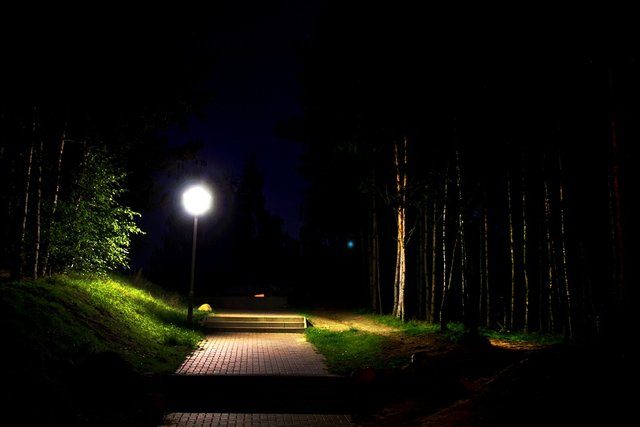Subcultures and Social Trends: Real Vampires – The Daywalkers and Undead Among Us

It starts possibly as a slow and gradual process, manifesting in puberty or possibly after some traumatic experience. It’s never some dramatic process that’s portrayed in movies and stories. Eventually though, with time and some trial and error, one learns how to curb the hunger. Becoming awakened is never an easy thing.
It’s an intense thirst-like sensation, an addiction complete with withdrawal symptoms, whether the fix is from a one inch incision from a willing volunteer or skimming in a pranic feeding from the unsuspecting masses…
Welcome to the subculture of the Real Vampire.
A Brief History of Vampirism

The history of vampirism has been covered exhaustively and ad-nauseum by several books, television shows and in one form or another, movies. The focus of this section will be on the history of the modern Real Vampire subculture.
The modern Real Vampire subculture can trace its roots back to the 1970s SadoMasochist scene because one of the ways the early Real Vampires could find their donors was by connecting with blood fetishists in the S&M clubs.
In 1972, Doctor Steven Kaplan founded the Vampire Research Center and promptly catalogued phone calls he received from those claiming to be real vampires. He subsequently went on in 1984 to write what some would consider a canonical text for the Real Vampire subculture titled, Vampires Are.
In 1977, Martin Riccardo founded the Vampire Studies society and released a quarterly Newsletter, Journal of Vampirism. This was followed by two major milestones which cause a major surge in the Real Vampire subculture: the publication and release of Anne Rice’s series The Vampire Chronicles and the publication and release of the White Wolf role playing game, Vampire: The Masquerade.
With the rise of the internet, the Real Vampire community has exploded in growth, primarily because greater ease of connectivity eliminated limitations due to geography and communication. The scholarship of vampirism has grown considerably amongst the subculture as a whole, with many of the most recent dissertations penned by prominent figures in the Real Vampire subculture.
What Exactly is a Real Vampire?

”Vampires are individuals who cannot sustain their own physical, mental or spiritual wellbeing without the taking of blood or life force energy from other sources, often human.”
Practitioners of this subculture tend to be very tribal in nature, forming covens or houses to find acceptance amongst others who share similar beliefs. Real vampires do not care much for the buzzfeed of popular culture and, generally speaking, consciously refrain from dressing in the stereotypical vampire attire. They generally have a negative view of those perceived as “lifestylers”, who are often referred to as fashion vampires and posers.
”Real vampires…have existed as an organized community for nearly 30 years, and in solitary for far longer. As there is no ‘test’ for vampirism, everyone is welcome and it’s a remarkably diverse crowd, ranging from doctors, lawyers, soldiers, scientists, soldiers, artists, teachers and parents of all age, gender, ethnicity and religion. Some chose to align with like-minded through courts and houses, though the majority…do not.”
The Real Vampire subculture is steeped in ritual, etiquette and ceremony amongst the different covens, within the covens they form, even between non-affiliated vampires and the non-vampire donors within the subculture. The etiquette and guidelines are codified in The Black Veil: A Vampire’s Code of Conduct. This code of conduct was originally written by Father Sebastiaan Van Houten in 1997 (and subsequently updated in 2002), a prominent fangsmith and elder in the Real Vampire subculture.
Generally speaking, the Real Vampire subculture has two main sets within the broader subculture: the Sanguinarians and the Psychic Vampires. Just like two competing brands in the same space, these two sets, generally speaking, do not get along.
Real Vampires: Saguinarians
In the Real Vampire subculture, the Sanguinarian set identifies with a need to consume small doses of human blood to maintain health and energy. Indeed the name, Sanguinarian is derived from the Latin term meaning “bloodthirsty.” It is believed this set was formed from Goth subculture and fused/retained many elements, mannerisms and etiquette associated with the SadoMasochist community (the Goth subculture and the SadoMasochist subculture are mutually exclusive with some overlap). This set includes not only the vampires, but also the donors and those who practice the much maligned act of autovampirism (self-feeding).
Generally speaking, the etiquette and foundational principles of negotiating terms and creating contracts in the SadoMasochist community are core principles in the Sanguinarian set between Vampires and Donors. Before the relationship is consummated with blood donation and consumption, a vampire/donor contract is usually drawn up to set the parameters of the relationship and protect against any wrongful accusations of assault.
A donor/vampire relationship need not be romantic and/or sexual in nature; it could be just about the blood. However, while Donors and Vampires are considered equals in the community, there is an expectation of subservience from the Donor to their respective Vampire within the Sanguinarian set.
Real Vampires: Psychic Vampires
In the Real Vampire subculture, the Psychic Vampire set identifies with a need to take or receive essence from others: energy, chi, prana, life force or vitality to maintain health and energy. Psychic vampires can engage in two types of “pranic” feeding: one –on-one feeding, which is self explanatory and “skimming”, which refers to feeding off the group at large; a little from everyone.
The origin of the term “psychic vampire” was popularized in the 1960s by Anton LaVey and he laid claim he coined the phrase in his infamous book, The Satanic Verses. Much like Goth and Sadamasochist subculture, Psychic Vampires and Satanists are mutually exclusive, with some overlap.
Within the Psychic Vampire set, the etiquette of feeding on a one-to-one basis is clearly established and follows similar principles of negotiation outlined in the Sanguinarian section. However, there is some dispute over the etiquette of skimming. Some believe it to be within bounds to take some from a large group without permission, while others staunchly disagree.
Stories and interviews of the Real Vampire Subculture litter the nightly news and periodicals:
- ABC News, (http://abcnews.go.com/2020/photos/photos-vampires-us-8964140/image-8964098)
- VICE, (http://www.vice.com/read/we-spoke-to-three-real-life-vampires-about-blood-lust-and-hunger-235)
- Discover Magazine, (http://blogs.discovermagazine.com/crux/2015/03/26/real-life-vampires-exist/#.V-WCHvkrJD8)
- Smithsonian Magazine, (http://www.smithsonianmag.com/ist/?next=/smart-news/real-life-vampires-exist-they-are-scared-admit-their-practices-doctors-180955877/)
- Vampire Community News, (http://merticus.com/vampirenews/tag/vampire-subculture/)
- Father Sebastiaan’s FangShop, (https://www.youtube.com/user/FatherSebastiaan)
It would be hard to dispute the Real Vampire subculture is still going strong and gaining traction among the next generation.
Capitalism and the Real Vampire Subculture

The marketplace for the Real Vampire subculture is as broad and diverse as one would expect for any mainstream subculture. Two of the most synonymous Real Vampire marketplace creations would be the Sanguinarium Network and the Fangsmith (because every vamp needs some teeth).
The Sanguinarium Network
”The Sanguinarium is a network of individuals, organisations and nightclubs who share a like-minded approach to the vampire culture, aesthetic and scene. The goal is to bring to life vision of the Vampire Connection as founded in Anne Rice’s The Vampire Chronicles, which is a network of vampire bars and safe houses in which vampires can be open about who they are; a voluntary standard of common sense, etiquette and ideals for the vampire culture. Many vampires are members of an active club scene and these clubs are a very important part of the vampire’s culture.”
”Vampire subculture consists of family-like substuctures that were first formed around nightclubs events. Places where vampires gather are known as havens and often, to gain access to these establishments, vampires must wear a symbol that identifies them as part of the vampire culture, for example a specially made silver ankh. Such items also allow vampires them feel more like a vampire.”
Fangsmithing
Fangsmithing is the art/science of creating dental prosthetics which look and act like fangs. They are meant to be worn both on a temporary and semi-permanent basis. A fangsmith should have at least some dentistry experience, but many are simply artists who have attained mastery of this particular medium through many hours of practical, hands on experience.
The process generally requires one or more dental castings be made, dependent upon both the number of sets of fangs one wants to purchase, and the type(s) of fangs one is looking to purchase. The fangs are generally made from dental acrylics and cost between 50 USD to 300 USD dependent upon if the fangs are designed to be temporary or semi-permanent.
A sampling of the broader Real Vampire subculture marketplace offerings:
- Gothic International Club Listing (https://www.vamp.org/Gothic/clublist.html)
- Vampire Rave (http://www.vampirerave.com/db/index.php?category=122)
- New Orleans Vampire Association (http://www.neworleansvampireassociation.org/)
- Fathersebatian.com (http://www.fathersebastiaan.com/)
- Kaos Custom Fangs (http://www.kaoskustomfangs.com/fangsmith-c1x9v)
“The pop-culture interest in vampires has led to the intersection of vampire enthusiasts with that of real vampires..[w]e find ourselves educating people that vampires are born and not turned (made), that we adhere to ethical and safe feeding practices, are of sound mind and judgment, and productively contribute to society. The vampire will transform according to what desires society is yearning to satiate and I don’t anticipate the interest in vampires waning.”
References
Wikipedia. “Vampire Lifestyle.” N.p July 26, 2016. https://en.wikipedia.org/wiki/Vampire_lifestyle
Subculture List. “”Vampire Subculture.” N.p. 2016. http://subcultureslist.com/vampire-culture/
Veritas. “Vampire Subculture: Sanguinarians.” Vampires.com. June 12, 2009. http://www.vampires.com/vampire-subculture-sanguinarians/
Moonlight. “The Black Veil: A Vampire’s Code of Conduct.” Vampires.com. March 4, 2012. http://www.vampires.com/the-black-veil-a-vampires-code-of-conduct/
Khan, Annie Ali. “The Bite Club.” The Express Tribune. February 12, 2012. http://tribune.com.pk/story/333917/the-bite-club/
Sa’Kage, Lucifervulus. “Notes on the Nature of Vampirism.” Wordpress. June 20, 2011. https://lucifervulus.wordpress.com/tag/vampires/
Wall, Kim. “Interview With a Real-Life Vampire: Why Drinking Blood Isn’t Like in Hollywood.” The Guardian. August 15, 2015. https://www.theguardian.com/society/2015/aug/15/real-life-vampires-interview
Browning. John Edgar. “The Real Vampire Community: A Concise History, ‘in The Vampire in Europe: A Critical History.” Apocryphile Press. 2014. http://www.academia.edu/9642592/_The_Real_Vampire_Community_A_Concise_History_in_The_Vampire_in_Europe_A_Critical_Edition
I went through a phase like this

Anton LaVey didn't author the satanic verses, and the psychic vampire he refers to is not the same as what you are talking about.
In Satanism, a psychic vampire is an individual who creates feelings of debt and guilt in others and "drains" them by manipulating them into feeling like they owe this individual something. A psychic vampire is not something you want to label yourself as, it is not a compliment and LaVey talks about driving a metaphorical stake through the vampire's heart by simply accepting their gifts without accepting any sense of obligation to that person in return.
I have met many psychic vampires in life, so have you - everyone has. Anton LaVey simply gave this type of person a name and addressed how to deal with them.
What is closer is the concept of the vampire from ToV (Temple of Vampire) - a group whose central doctrine is "within lies fact and fancy" and encourages people to test before belief - for that reason there are a lot of Satanists who are also ToV members. I am not a member myself however, I believe that the ToV's style is too supernatural for me to be able to get involved as I consider myself a man of science. I do encourage anyone with an interest to look into them though - in particular, the "dayside" has a lot to recommend.
On the "nightside" they deal with the kind of energy vampirism you refer to in your post and suggest a "test it and see if it works" approach to this kind of feeding. For myself I believe this sort of feeding works but only as a form of psychological manipulation of the self like all forms of greater magic.